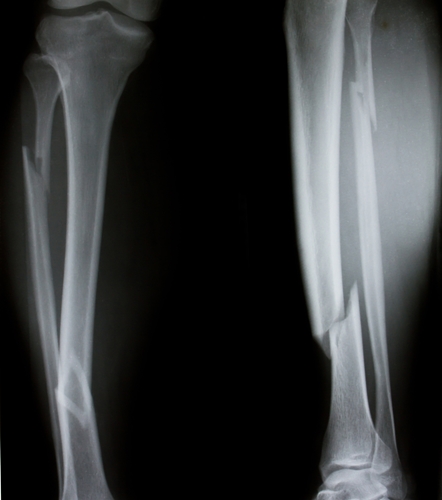Excessive adolescent computer use may lead to higher osteoporosis risk
Computers are a fact of life in the modern world and their use is practically unavoidable for anyone with a job or in school. While some novel configurations exist, the common setup of a keyboard and monitor on a desk can be found throughout the world. Even after the advent of laptops, people are still interacting with computers in the same sedentary fashion.
According to new research from scientists at the Arctic University of Norway in Tromsø, the prevalence of long-duration computer use by adolescents may have negative effects for their bone health and later risks of bone fractures. The study, which was presented at the World Congress on Osteoporosis, Osteoarthritis and Musculoskeletal Diseases, found that male adolescents who spent more time sitting down interacting with a computer invariably showed lower rates of bone mineral density. While not the only factor, low BMD can be an important precursor to osteoporosis and ease of bone fractures later in life.
Investigating computer use
Computers and the Internet are so ubiquitous today that teenagers can seem to live off of them, but the researchers of the study may have found evidence to unplug every once in a while.
The study reviewed 463 girls and 484 boys between ages 15 and 18 in Norway during a nation wide fitness initiative for high school students. Relative BMD rates in the teenagers were measured at the total hip, femoral neck and total body level using dual-energy X-ray absoptiometry, and variables relating to lifestyle factors were accounted for through an extensive questionnaire on the students' habits. The researchers accounted for age, sexual maturation, body mass index, smoking exposure and alcohol consumption.
The study found that not only did boys spend more time in front of a computer screen than girls, but their relative BMD counts were inversely related to the duration of that particular sedentary activity. This also led to higher BMI levels in boys.
However, computer activity in girls did not show similar results. Female adolescents who spent four to six hours in front of the computer per day during the weekend actually showed higher BMD counts than those who spent 1.5 hours or less. The researchers called for more investigation into this anomaly.
Predicting future issues
"Bone mineral density is a strong predictor of future fracture risk," Anne Winther, Ph.D., lead author of the study, said in a statement. "Our findings for girls are intriguing and definitely merit further exploration in other studies and population groups. The findings for boys on the other hand clearly show that sedentary lifestyle during adolescence can [have an] impact on BMD and thus compromise the acquisition of peak bone mass. This can have a negative impact in terms of osteoporosis and fracture risk later in life."
Loss of bone mass during adolescence may pose a particularly high threat to skeletal health later in life. The Osteoporosis and Related Bone Diseases National Resource Center explained that bone mass is generally built up at an increasing rate, which peaks around the teenage years and remains at that level until some time in the 30s. If this peak bone mass is affected, the overall chance for healthy bones is decreased and the risk of disorders such as osteoporosis increases.
Teenagers – or anyone – who may be at a higher risk of developing osteoporosis due to a sedentary lifestyle should participate in more active events. The Mayo Clinic explained that walking, running, jumping, dancing and any other action that places strain and weight on bones can induce the body to give more minerals to the structures and create healthy bones.



